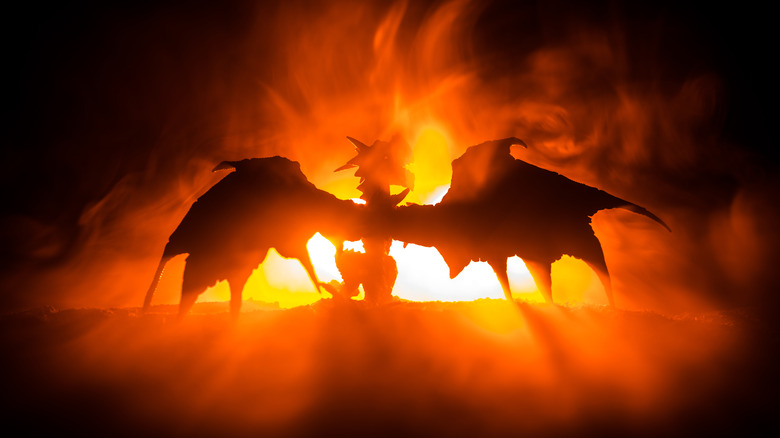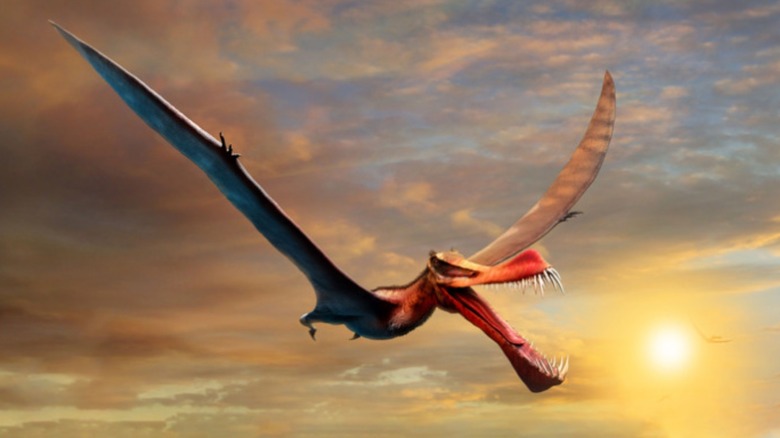New Scientific Find Reveals This Dragon-Like Creature Once Lived In Australia
Dragons don't exist. As far as we know, they never have. Yet humans the world over have filled their mythologies with the scaly, winged, sometimes fire-breathing creatures for thousands of years. According to All That Is Interesting, we find stories about dragons as far back as ancient Mesopotamia. The Babylonian dragon was called Tiamat, and Tiamat was slain by the hero god Marduk. That was over 3,000 years ago, and no one has found evidence of dragons' existence ever since.
But we're getting closer. According to Live Science, researchers in Australia have uncovered a fossil with some pretty dragon-like features. Known to science as a type of flying dinosaur called a pterosaur, the specimen is estimated to have had a skull over a meter long and a wingspan of 7 meters (that's almost 23 feet long). Scientists extrapolated these estimates from a fossilized piece of the animal's lower jawbone. The study's author Tim Richards said that the new species — Thapunngaka shawi — is "the closest thing we have to a real life dragon."
Thapunngaka shawi didn't look exactly like a dragon
If you're imagining a long, slender reptile with a pointed tail, short, lizard-like legs, maybe a pair of catfish-style whiskers and tufts of smoke coiling from its nostrils, you might be a little disappointed by what T. shawi actually looked like. It featured a crest on the underside of its jawbone, and scientists believe that it would have had one on the top of its head as well, giving it a long, spearlike mouth built for the aerodynamics of flying. And it didn't really have a tail. Richards said in the media release announcing the find that it "would have been a fearsome beast," but it also sounds a bit goofy-looking. "It was essentially just a skull with a long neck, bolted on a pair of long wings."
Despite its inelegant form, you wouldn't want to mess with T. shawi. With a mouth full of 40 teeth in a skull over a meter long, the thing was just as scary as any dragon you could imagine. As for its taxonomy, its genus name is comprised of the words for "spear" and "mouth" from the extinct language of the indigenous Wanamara Nation. Its species name is an homage to Len Shaw, the amateur fossil hunter who discovered the bone all the way back in 2011. The researchers' estimates of T. shawi's dimensions make it the largest pterosaur known to have terrorized the skies over prehistoric Australia.

